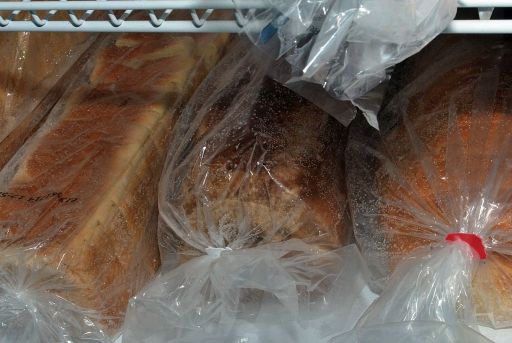Baking your own bread is not just a culinary endeavor; it’s a therapeutic journey that involves science and art.
The process of letting bread rise, often called proofing, allows the dough to develop complex flavors and textures.
While the norm is to let the bread rise twice, some bakers wonder, can you let bread rise 3 times?
In this article, I’ll reveal the answer to this question and explore the benefits & risks of multiple rises, debunk some common myths, and provide you with valuable insights for creating the perfect loaf.
So let’s get started!
Can You Let Bread Rise 3 Times – Revealed
Yes, you absolutely can let the bread rise 3 times! In fact, this practice can yield some remarkable results in terms of flavor, texture, and even the overall appearance of your bread.
Each rise gives the yeast more time to ferment the dough, which leads to more nuanced and developed flavors.
However, there are a few key considerations to keep in mind to ensure success.
Triple Rise Technique
The triple rise technique involves dividing the bread-making process into three distinct phases of rising.
Here’s a quick overview of how it works:
1. First Rise
After the dough has been thoroughly kneaded, it’s essential to allow it to rest and undergo its first rise.
During this phase, the dough is given time to double in size. This process is significant as it allows the yeast present in the dough to consume the sugars within it.
As a result of this yeast activity, carbon dioxide is generated, leading to the formation of air pockets within the dough’s structure.
2. First Punch and Shape
Once the first rise is complete and the dough has expanded sufficiently, it’s time to gently deflate the dough.

This step involves releasing excess gas that has built up during the initial fermentation.
After deflation, the dough is carefully reshaped into its desired form, whether it’s a round ball or a loaf shape.
This reshaping process is essential for the even distribution of yeast, sugars, and moisture throughout the dough, ensuring consistent fermentation.
3. Second Rise
Following the first punch and shaping, the dough is allowed to rest and rise for a second time.
While this rise is shorter than the initial one, it’s equally vital.
During the second rise, the dough continues to develop its flavor profile and enhance its overall texture.
4. Second Punch and Shape
Similar to the first punch, the dough undergoes another gentle deflation and shaping session after the second rise.
This step readjusts the dough’s internal structure, setting the stage for the final rise and ensuring a consistent texture throughout the loaf.
5. Third Rise
The 3rd rise, which comes after the second punch and shaping, allows the dough to reach its full potential in terms of flavor and texture.

During this phase, the dough develops its last layers of flavor nuance and achieves its desired texture before baking.
6. Baking
Once the dough has successfully undergone its third rise and has reached the optimal flavor and texture, it’s ready to be baked.
Baking solidifies the dough’s structure and texture while imparting a golden brown hue to the crust, resulting in a finished product that’s both visually appealing and delicious.
Benefits of Letting Bread Rise 3 Times
The triple-rise technique offers several benefits that can elevate your homemade bread to a whole new level:
1. Enhanced Flavor
When you allow the bread dough to rise multiple times, you’re actually giving the yeast more opportunities to work its magic.
As the yeast ferments the dough, it breaks down complex carbohydrates present in the flour.
This breakdown produces a variety of flavorful compounds that add depth and richness to the taste of your bread.
It’s like giving the ingredients extra time to mingle and develop their flavors, resulting in a more delicious and satisfying eating experience.
2. Improved Texture
Imagine sinking your teeth into a slice of bread that’s not just soft, but also has a perfect crumb structure.

When you let the dough undergo several rising cycles, it creates a finer and more even texture throughout the loaf.
This means that when you tear into the bread or spread butter on it, you’ll notice a delightful consistency that’s both tender and consistent.
It’s like achieving that ideal balance between a satisfying bite and a melt-in-your-mouth feel.
3. Better Shelf Life
Freshness matters when it comes to bread, and allowing your dough to rise more than once can actually extend its shelf life.

This happens because the extended fermentation process helps the bread retain moisture better.
The moisture retention prevents the bread from becoming dry and stale too quickly, keeping it enjoyable for a longer period of time.
So, you can savor your homemade bread over several days without worrying about it turning tough and unappetizing.
4. Artisanal Appearance
Have you ever admired those beautifully baked loaves with a perfectly golden crust and a domed top?
This artisanal appearance is partly the result of carefully controlled rising periods. Allowing the dough to rise multiple times contributes to this charming look.
The controlled rises to help the bread maintain its shape during baking, leading to that well-defined crust that’s a joy to break into.
The rounded top, known as the dome, is also a result of this controlled rising, giving your bread that visually pleasing touch that’s sure to impress.
Risks of Over-Rising and Dough Degradation
One common concern when letting bread rise multiple times is the risk of over-fermentation.
While it’s true that excessive rising can cause the dough to become overly sour or collapse, following proper timing and techniques can mitigate this risk.
Keep the following tips in mind:
- Monitor Rise Times: Keep a close eye on your dough during each rise. The ideal rise time can vary based on factors like room temperature and yeast activity.
- Use the Finger Test: Gently press your finger into the dough. If it springs back slowly, it’s ready for the next step. If it springs back quickly, it needs more time.
- Refrigeration: If you’re worried about over-rising, you can slow down fermentation by placing the dough in the refrigerator during one of the rise phases.
How Long To Let Bread Rise?
The time required for bread to rise can vary depending on factors such as room temperature, yeast activity, and the type of bread being made.
Generally, the first rise, known as the bulk fermentation, takes around 1 to 2 hours at room temperature, or until the dough doubles in size.
After shaping the dough into its final form, the second rise, or proofing, typically lasts 30 minutes to 1 hour.
This final rise ensures the dough fully develops its flavor and structure. Cooler environments might extend rising times, while warmer settings can expedite the process.
It’s essential to monitor the dough’s appearance rather than strictly adhering to specific timeframes.
Visual cues like doubling in size and a slight jiggle, when tapped, can help determine if the dough is appropriately risen.
Adjustments can be made based on the dough’s progress to achieve the desired texture and taste.
Can You Let Bread Rise 3 Times – Conclusion
In conclusion, the triple-rise technique emerges as a wonderful ally for crafting exceptional loaves.
It takes you on a journey from kneading to baking, infusing bread with richer flavors, better textures, longer freshness, and a captivating appearance.
Choosing to let the dough rise three times, rather than the usual two, creates a harmonious interplay of flavors as yeast interacts with ingredients.
This technique shifts baking from a routine to an art, though not without challenges. The risk of over-fermentation hovers, threatening the results.
But with knowledge and vigilance, you can surmount these challenges and create bread that truly delights.
Frequently Asked Questions (FAQ)
Can You Let the Bread Rise Too Many Times?
Yes, you can let the bread rise too many times. Each rising cycle causes yeast to consume sugars, creating carbon dioxide gas that makes the dough rise.
However, the gluten structure weakens over time, leading to less structure and texture in the final loaf.
After too many rises, the dough becomes over-fermented, resulting in a flat, dense loaf with an undesirable taste and texture. Typically, 2-3 rises are recommended for optimal bread quality.
Is It OK to Let the Bread Rise for 3 Hours?
Yes, it’s generally okay to let bread dough rise for 3 hours, but the optimal rising time can vary based on factors such as the type of bread you’re making, the temperature of your environment, and the specific recipe you’re following.
Most bread recipes will provide a recommended rising time, which you can use as a guideline.

